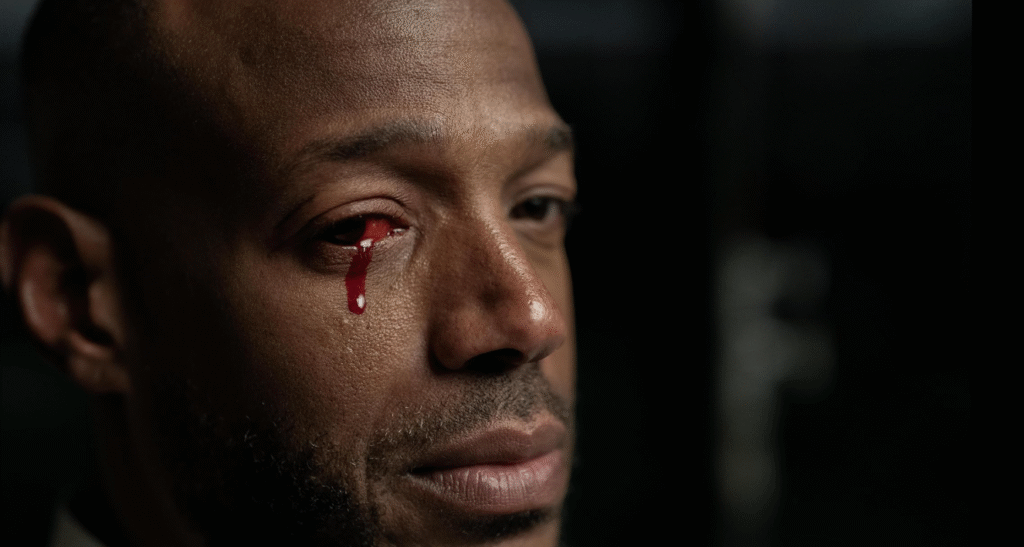IZIDOR – A Tender Glimpse into a Hidden Past.
In just under thirty minutes, IZIDOR manages to stir the soul, ...

There’s something magnetic about a film that dresses itself like a masterpiece before it even decides what story it wants to tell. HIM is that kind of beautiful trouble gorgeous to look at, unsettling in all the right ways at first, and then slowly slipping through your fingers the moment you try to hold on to its meaning. It feels like a film that wants to be studied, not just watched, and that ambition alone deserves attention, even if it bites off more than it can chew.
At its core, the film follows Cam, a rising college football talent whose future is suddenly uncertain after a head injury leaves him questioning everything he’s built his identity around. Just when it seems like his momentum is slipping, he’s offered the chance of a lifetime: a private training retreat hosted by the legendary quarterback Isaiah White. It’s supposed to be the bridge to greatness, a passing of the torch from one icon to a potential heir. Instead, it becomes a slow dive into something stranger and much darker.
The setting is a secluded desert compound, which immediately shifts the energy of the film from sports drama to fever dream. What begins as mentorship quickly warps into a spectacle of control, ritual, illusion, and psychological erosion. The film toys with the idea that greatness in sports isn’t earned—it’s extracted. And there’s a constant question beneath the surface: is Cam being shaped into something, or hollowed out for someone else’s legacy?

Thematically, HIM wants to live in that eerie space between worship and exploitation. It grapples with the glorification of athletes, the cult of fandom, and how easily ambition makes you complicit in your own undoing. There are flashes of brilliance in how it paints the football world not as competitive, but sacral, almost sacrificial. The problem is, the film hints at so much without grounding enough of it. You feel the intention, but not always the arc.
The lead, Tyriq Withers, carries a role that demands vulnerability, confusion, and physical presence all at once. He gives what he can, and there are moments where he lands emotionally, especially early on. But as the film leans harder into its disorientation, his performance doesn’t always keep us tethered to his unravelling. Marlon Wayans, however, feels like he’s in his element. He slips into Isaiah with an unnerving blend of charm and menace, his presence pulling focus every time he enters a scene. There’s an intensity to him that feels both deliberate and unpredictable, and it’s one of the most compelling things the film has going for it.
Visually, this film is stunning, sometimes to a fault. The production design is immaculate, the editing leans aggressively toward fragmentation, and the camera treats the compound like a cathedral of ego and pain. The cuts, pacing, and surreal imagery create an atmosphere that is intentionally destabilising, and aesthetically, it succeeds. But beauty without clarity can only carry you so far. Eventually, you start to feel the gap between the symbolism and the storytelling widen.

The horror elements live somewhere between psychological breakdown and occult suggestion. There are moments that feel sharp and imaginative, and others that feel more decorative than meaningful. The tonal shifts don’t always land, and while the surrealism is bold, the follow-through is muddy. You’re left interpreting without enough foundation to actually land on something satisfying.
By the time the film reaches its final act, you’re not waiting for answers—you’re waiting for cohesion. There’s a difference between ambiguity that invites thought and ambiguity that abandons you, and HIM drifts closer to the latter than it should.
Still, I can’t dismiss it. It’s ambitious, visually intoxicating, and clearly reaching for something provocative in the cracks of sports culture, masculinity, and devotion. It just gets lost in its own reflection. HIM is a film I suspect will find its defenders in time people willing to rewatch, reinterpret, and mine it for hidden intent. But for most viewers, the style will shine far brighter than the story beneath it.

Leave A Reply